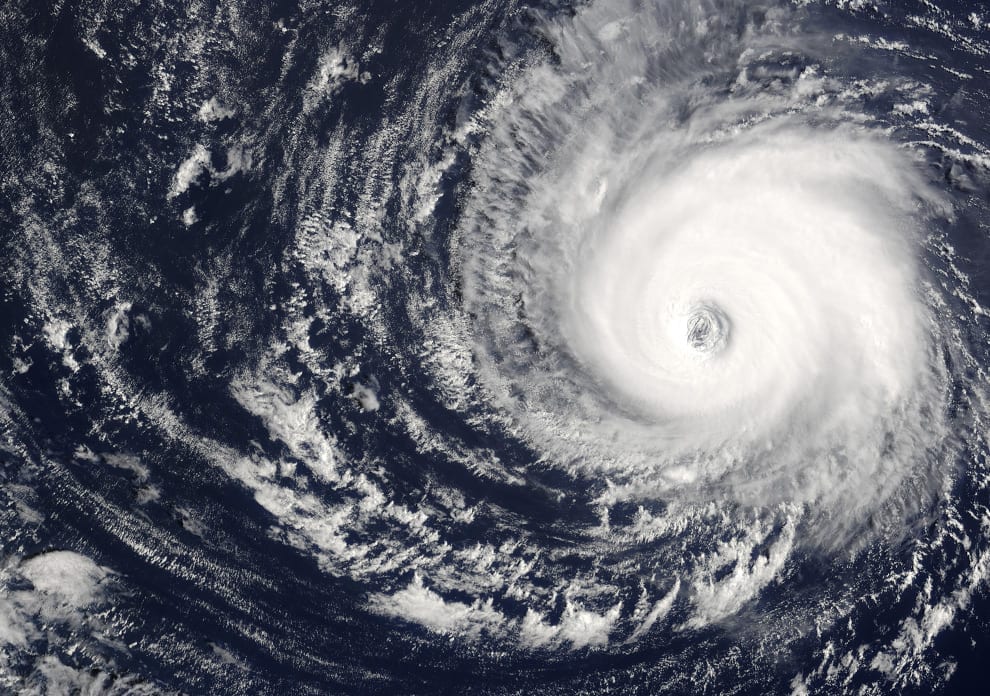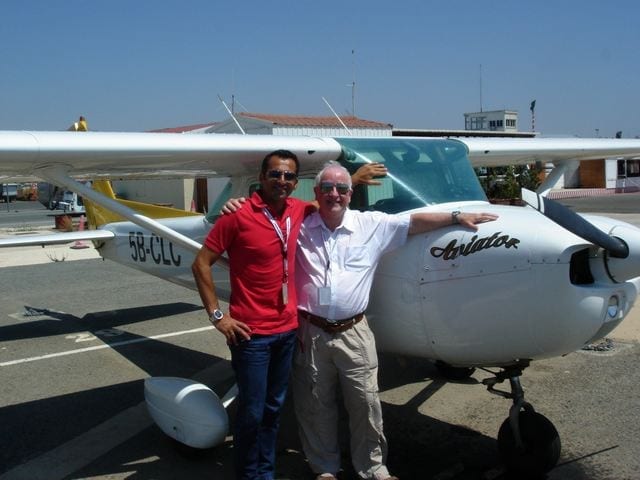This story starts at the picturesque port of Madang on the northern coast of New Guinea. I was flying an RAAF Hawker Siddeley HS748 on a two week tour around New Britain and New Ireland, culminating with the training of a new squadron pilot in the finer points of Highland operations in central Papua.
We had earlier flown into places of wartime history such as Rabaul, Kavieng, Manus Island, Finschhafen, Lae, and Wewak. Now we were to operate deep into mountain country, navigating through the various gaps in the ranges around Mount Hagen and Goroka.

The British made HS748 was ideal for the task, with its excellent short takeoff and landing performance.
After a night of merry-making at Madang, we had planned to depart after lunch and visit Mount Hagen, Minj and Banz which were situated along the Waghi Valley, itself surrounded by mountain ranges up to 14,000 feet above sea level. The base of the Waghi was over 5000 feet above sea level, which in turn meant very high density altitudes in terms of takeoff and landing performance. The airstrip lengths were just adequate for our planned take off weights, and back at Canberra, our home base, we had practiced flying from a 2300-foot grass strip situated alongside the main long north-south runway.
Airborne out of Madang, we climbed to 15,000 feet, backtracking on the Madang NDB for Minj, some 100 miles over rugged country to the south west. As we passed over the winding rivers of the Ramu Valley, heavy cloud could be seen covering the mountain gaps adjacent to the 14,800-foot summit of Mount Wilhelm. New Guinea weather is characterized by massive cloud build up over the mountain ranges by early afternoon. We were aware of this problem, and, in fact, it suited us nicely, as the purpose of the trip was navigation in mountain areas.
The HS748 had a good altitude capability, and I knew that – providing we stayed VMC – we could climb out of trouble if we got caught in bad weather.
With five minutes to ETA at Minj, our first landing spot, there were three of us up front, all map reading. Standing between the two pilots, the navigator was the first to spot a cloud break, which placed us over the eastern end of the Wahgi valley only a few miles from Minj. Radio reports from other aircraft indicated that heavy rain showers were causing bad visibility around Mount Hagen to the northwest and Goroka to the southeast.
One report gave lowering visibility in the Waghi Valley. We dropped the landing gear, and lost height in a series of turns designed to keep us clear of stratus and towering cumulus. I had a feeling of uneasiness at the sight of areas of nimbus rain cloud drifting across the base of the mountains leading down to the valley.
We had momentarily lost radio contact with Madang flight service after advising that we were in the vicinity of Minj, and that we would cancel SAR watch on the ground. The cloud around Minj was low and black, and we were forced to circle at 1000 feet above the valley at 6000 QNH in order to get a pinpoint. Neither Minj, nor nearby Banz, were visible in the rain.
Once under the main cloud base, we could see that both ends of the Wahgi Valley were blocked with heavy veils of dark rain cloud, and I felt that the time had arrived to get back to Madang, fast. The cloud break through which we had descended had by now filled over, and with the proximity of mountains it would have been suicidal to climb in IMC.
We were relieved, however, to spot a Twin Otter emerging from the rain and obviously heading down the valley for Goroka some 30 miles to the southeast. You’re a better man than I am, Gunga Dhin, I thought, and with gear retracting I turned to follow him to safety. He did not reply to our radio calls, so I swung in behind him and trailed line astern by a few hundred yards. I doubt if he was aware of our presence.
As we flew past the tiny airstrip of Kundiawa situated upon a ridge overlooking the rapids of the Chimbu River, I made a mental note that, as a last resort, I would plant the HS748 squarely on the threshold, and work out how to get out of the place once safely ensconced in the pub — if there was one! Meanwhile the Twin Otter had drawn ahead and began to disappear into heavy rain. Our windscreen wipers were now going flat out, and in the cockpit three pairs of eyes were pinned against the windscreen looking for our saviour.
This was getting serious, and as I had no way of knowing if the “Twotter” was about to do a 180 for his own safety, I hauled into a limit turn and back towards the relative safety of clear air near the Chimbu River. A few minutes later, we were orbiting Kundiawa airstrip with the awful realisation that this tiny grass strip, balanced precariously on top of a narrow ridge, was going to be our home for the night. In my mind I could already visualize the waiting military court martial back at Canberra.
A be-medalled Wing Commander would coldly ask why I had pressed on regardless into the Wahgi Valley in worsening meteorological conditions, and despite other aircraft reporting bad weather closing in. Would it not have been considered good airmanship to return to Madang while still on top of clouds? I could have replied quite truthfully that it seemed a good idea at the time and also that the last time I stayed at Minj, we had enjoyed a fine party with some expatriate wives whose patrol officer spouses were away in the hills chasing murderers. However, to admit that, would have been to dig my own grave, not only with the court martial, but with vengeful husbands.
By now, I had run out of ideas, and like it or not, I had to get the 748 on the ground before approaching rain clouds cut visibility to zero. I have seldom felt so alone, and although the term CRM or crew resource management had yet to coined, I asked the rest of the crew if they had any suggestions. The navigator thought it might be worth flying along the Chimbu River valley a few miles north, to see if the Bundi Gap into the Ramu River plains was open. Mountains disappeared into cloud on both sides of the Chimbu valley, leaving very little room to turn tightly if the gap was closed and we had to get back to Kundiawa.
It was a gamble that I decided not to take, mainly because of the danger of the weather socking in at Kundiawa while we were poking our noses further up the valley towards the Bundi Gap. In any case, I was not confident of my ability to recognize the Gap if I saw it.
With a deep breath, I announced we were committed to land at Kundiawa. We had lost communications with Madang, and could only hope we could find a telephone on the ground in time to prevent a full scale search operation. After an inspection run over the strip, I set the aircraft up for a precautionary landing approach and turned on to final.
As we straightened up, the three of us simultaneously spotted rays of sunlight slanting against the eastern slopes of jungle covered rising ground a mile or so up the gorge of the Chimbu River. Where there is sunlight, there must be a hole in the clouds, which might offer a chance of climbing away in the clear.
I pushed open the throttles, retracted the gear and flaps, and keeping to one side of the gorge to allow for a tight 180, we checked out the sunbeams. To our collective relief, the parting of the clouds showed there was just enough to circle within, although we would lose out badly in rate of climb if we were forced into a series of steep climbing turns. There was also the possibility of the cloud closing up and trapping us in IMC as we circled upwards.
I decided the best course of action would be to zoom climb at full takeoff power until being forced to lower the nose, then resume a spiral climb to keep within the edges of the cloud until reaching safety on top. With this plan in mind, I turned back towards Kundiawa to give room to manoeuvre, and switched on the water methanol pumps to give the engines full boosted power. Having got into position, I went to full takeoff power, felt the water methanol cut in with a jolt, and dived at maximum permitted speed, plus some, towards the scattered sunlight on the mountain side.
As the sun glinted on the wings, I looked up through the cockpit side window at patches of blue sky several thousand feet above, and decided instantly that it was a goer. Hauling back, I pulled up as steeply as I dared, while keeping a close eye on the rapidly unwinding airspeed indicator. As the speed died away and the VSI fell back, I noticed that the water methanol contents showed nearly empty, which meant that when the methanol cut out, the Rolls Royce Dart engines would lose considerable power. I hoped there would be enough remaining in the water methanol tanks to get us on top of the cloud and thus safely back to Madang.
Well, we managed to climb safely through that beautiful hole in the clouds, and also back in radio contact with Madang. Flight Service was not overly concerned at our loss of communication as this was a routine event in the Highlands.
An hour later we were back at the bar of the Smuggler’s Inn at Madang, downing the first of many cold beers. In hindsight, I should have turned back to Madang when aircraft reports indicated bad weather at both ends of the Wahgi Valley. But it seemed a good idea at the time.
- Like overtaking on a blind corner and hoping nothing is coming the other way - June 17, 2019
- Flight directors – a fatal attraction - April 18, 2018
- The day I learned I’d never be a fighter pilot - September 22, 2016















John,
Good story. Reminds me an account I read about a C-47 crash and subsequent survivor rescue in Papua New Guinea during WWII. Glad your sortie culminated with a safe landing. Ahhh man…., the hubris of youth, huh? I enjoyed the visuals….
Dave
A great story first word to last.